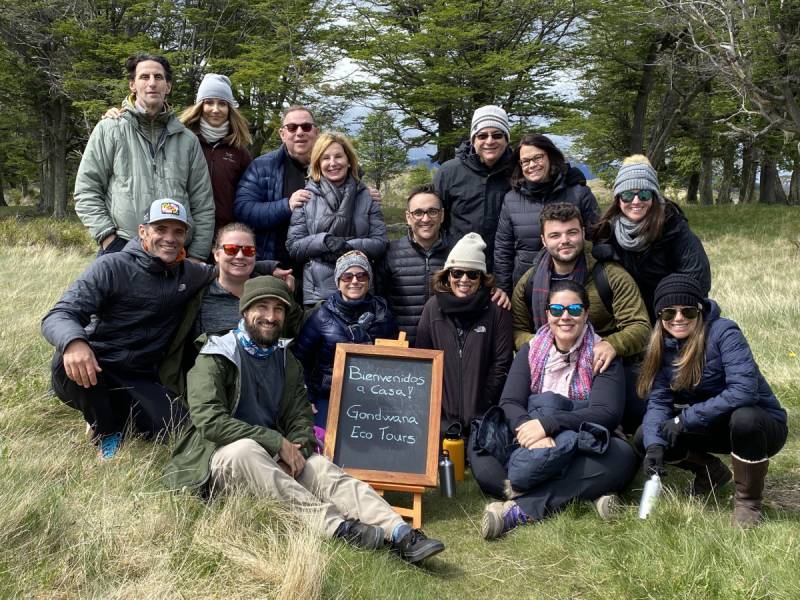A Tanzania Tour Safari In The Ngorongoro Crater
Download Travel Details >PRIVATE & SMALL GROUP TOURS TO THE WORLD'S BEST DESTINATIONS
Join Us For A Safari In Tanzania

An Adventure In Africa – Tanzania’s Garden Of Eden
Picture this – Africa, Tanzania more specifically. Deep in the heart of the Serengeti’s vast plains lies the Ngorongoro Crater, 102 square miles of wetlands, forests, and grasslands. This world-famous safari destination offers visitors incredible game-viewing opportunities and the chance to explore the floor of an extinct volcano! From game drives to photography tours, a Tanzania tour safari to Ngorongoro Crater is truly a once-in-a-lifetime adventure!
What Is The Ngorongoro Crater?
Tanzania’s Ngorongoro Crater is an amazing, bowl-like natural feature that has gained fame as a veritable Garden of Eden. This unique geological feature is thought to have formed about 2.5 million years ago when an active volcano’s cone collapsed inward after a massive eruption. The enormous, unbroken caldera we see today is a direct result of this implosion. Of the hundreds of calderas around the world, Ngorongoro Crater is the largest unbroken one – meaning no part of the crater wall has been breached. But, just how big is this crater? Ngorongoro Crater’s size is truly massive – it is almost 12 and a half miles wide and covers 102 square miles of swamps, forests, plains, lakes, and streams.
Five Fun Facts About Ngorongoro Crater For Your Tanzania Tour Safari
Ngorongoro Crater is located within the Ngorongoro Conservation Area in Africa’s Tanzania. This protected region includes a large part of the southern Serengeti’s short-grass plains and the Ngorongoro Highlands, a range of ancient volcanoes on the western side of the Great Rift Valley. The Ngorongoro Crater is considered one of the seven natural wonders of the world, attracting thousands of visitors on Tanzania tour safaris each year.
- Viewed from the rim, the crater looks empty! From the rim of Ngorongoro Crater, the basin floor looks empty – but that's only because you're too high to see the abundant wildlife spread out below. The wall of Ngorongoro Crater rises about 1,960 feet above its floor. More than 25,000 to 30,000 large mammals live in the basin of the crater. It’s not until you begin your descent to the crater’s floor that you realize just how many animals live in this incredible, natural zoo!
- The crater has several different ecosystems. Ngorongoro Crater has a wonderfully large range of habitats able to support a vast array of wildlife. From the forested canopy of the crater’s walls where leopards hide to the salt lakes where flamingos frolic, and the marshes where hippos wallow to the grasslands where lions, elands, wildebeests, plains zebras, black rhinos, and spotted hyenas gallop, there’s no shortage of photo opportunities for visitors on a game drive through the Ngorongoro Crater.
- Africa, and Tanzania specifically, is home to the “Big 5.” This list of wildlife includes bush elephants, Cape buffaloes, leopards, lions, and black rhinos. Most parks and game reserves have a few of these animals, but the Ngorongoro Crater has all five! The Ngorongoro Crater size seems small when compared to many parks, making the fact that all the members of the Big 5 can be found within its walls even more amazing. Giraffes, however, do not live in the crater’s basin. Most wildlife experts speculate that the crater’s wall is too steep for them to descend.
- More than 550 species of birds live in the Ngorongoro Crater, making it very popular with Tanzania tour safaris and birders. A trip to the crater’s floor allows you to see many rare and beautiful native birds, as well as migratory birds. The list of birds that call the crater home includes eagles, buzzards, hawks, kites, vultures, flamingoes, swans, storks, pelicans, geese, plovers, pheasants, sparrows, cranes, and more!
- The name Ngorongoro is onomatopoeic. Meaning, it’s based on the sound a cowbell makes. The Maasai people coined the term, after listening to the sound made by the bells tied around the necks of their herd animals. This sound was reproduced by the Maasai as “ngor-ngor” when speaking, and ultimately was used to name the crater in Tanzania!
When Is The Best Time To Visit The Ngorongoro Crater?
When is the best time to plan your Tanzania tour safari to the Ngorongoro Crater? Since the wildlife remains within the steep-walled caldera all year round, you can visit any time you’d like! However, some times are more popular with tourists, so the crater will be more crowded. When you visit Ngorongoro Crater has a lot to do with making sure you aren’t there during peak tourist season.
Tanzania has two rainy seasons: from April to May and from November to December. During this time, temperatures are warm and the caldera can get muddy. But there are fewer visitors during the rainy months, and the Ngorongoro Crater transforms into a lush Garden of Eden. During the dry season, the vegetation wilts in the heat, making it easier to spot animals on a game drive. It also can be a bit cooler, making it more pleasant for tourists!
|
Season |
Pros to visiting: |
Cons to visiting: |
|
Short dry season (January to mid-March) |
Animals are easier to spot since vegetation is sparse |
Uncomfortable, sticky temperatures |
|
Long wet season (mid-March to May) |
Lush foliage, fewer tourists |
Muddy roads |
|
Long dry season (June to October) |
Animals congregate around water holes and are easier to find; cooler temperatures |
Peak tourist season, crowds |
|
Short wet season: November and December |
Fewer tourists, incredible scenery |
Warmer temperatures |
Depending on the time of year, you're likely to either look down from the crater rim on a green, flourishing basin, or a dry, scorched one. But no matter what time you plan your visit to Africa, Tanzania, you will be guaranteed incredible wildlife sightings at the Ngorongoro Crater!
What Animals Can You See On a Tanzania Tour Safari at Ngorongoro Crater?
As mentioned above, the Ngorongoro Crater size is massive. This means that it is home to many wonderful and important animal species. It also has an incredible density of each species, which means it’s easy to see many wild animals in a short amount of time. Because the crater wall is so steep, it has served as a semi-barrier to the outside world. Both humans and certain animals have a hard time descending the steep wall to reach the plains and hills of the basin. This has allowed the crater to become a true sanctuary for all sorts of wildlife.
Here’s a short list of some of the animals you can see on a Tanzania tour safari in the Ngorongoro Crater:
- Black rhinos – they’re critically endangered, as there are only around 5,000 left in the world.
- African golden cats – they’re listed by the IUCN as vulnerable.
- African wild dogs (or painted dogs) – these beautiful carnivores are endangered, but seem to be thriving in Tanzania.
- Lions – the crater is home to 70 lions, or 8 lion prides, which is the highest population density of lions in any one location in Africa!
You can also see elephants, hyenas, jackals, cheetahs, leopards, buffalo, wildebeests, zebras, gazelles, elands, monkeys, and hippos when visiting the crater! Certain animals live in the crater year-round, while other species migrate in and out of the crater with the seasons. For instance, about half of the crater’s zebras and a small portion of the wildebeest population leave the crater during the rainy season. And it’s during this time that the crater’s eland and buffalo numbers increase.
Is It Worth It To Visit The Ngorongoro Crater?
If you’re planning a Tanzania tour safari, a stop at the Ngorongoro Crater is a must. A third of all Tanzania tourists visit the crater each year, which totals 450,000 annually. This makes Ngorongoro one of the top tourist attractions in all of Tanzania, along with Mt. Kilimanjaro, the Serengeti, and the beaches of Zanzibar.
Most Tanzanian travelers will put together a safari itinerary that combines the Ngorongoro Crater with the Serengeti, Tarangire National Park, and Lake Manyara. If you book your trip with a reputable tour operator like Gondwana Ecotours, they will help you put together a memorable experience! So, don’t delay – book now for a fantastic journey into the heart of Africa, to Tanzania’s Ngorongoro Crater!

